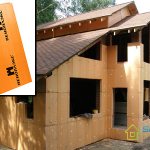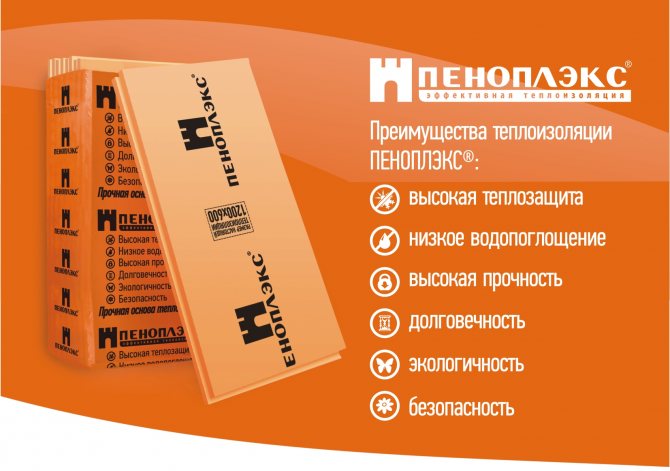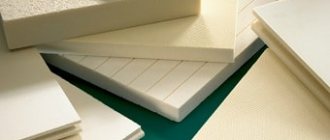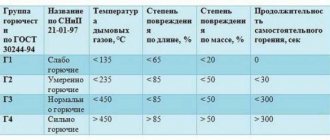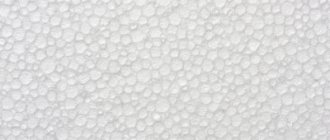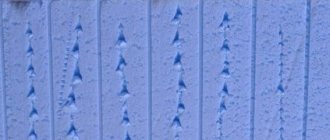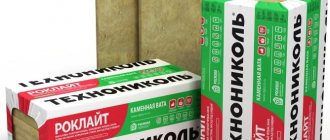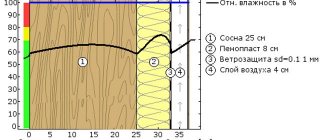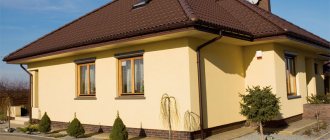Penoplex heaters - technical characteristics, properties and areas of their application
Heaters of the Penoplex brand are nothing more than extruded polystyrene foam. It belongs to a new generation of heat insulators that are highly efficient in terms of keeping warm. In this article, we will take a closer look at Penoplex: technical characteristics, pros and cons and areas of its application. To begin with, we note that this material is durable, almost does not absorb water at all and has a low coefficient of thermal conductivity.
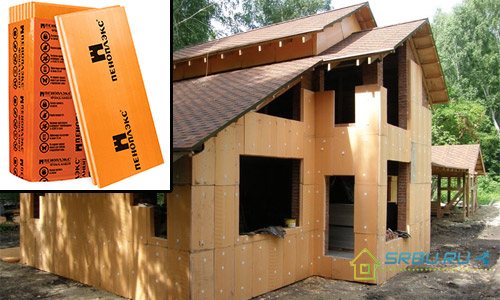
The specifics of the production of Penoplex and its special properties
The first extrusion plant appeared in America more than half a century ago. During the production process, polystyrene granules are subjected to high pressure and temperature. The catalyst is a special foaming agent. Usually it is a mixture of carbon dioxide and light freon. The resulting fluffy mass, reminiscent of well-whipped cream, is squeezed out of the extrusion unit. After a while, freon evaporates, and air enters the cells in its place.
Thanks to extrusion, the manufactured material has a finely porous structure. Each of its identical tiny cells is isolated. The size of these cells is from 0.1 to 0.2 millimeters, they are evenly spaced inside the material. This makes the material strong and warm.
Water absorption - minimal
For heat insulators, the ability to absorb moisture is an important characteristic. The following tests were carried out: Penoplex plates were left in water for a month, immersed in it completely. Water was absorbed by them in a small amount only for the first 10 days, after which the material ceased to take up moisture. At the end of the term, the amount of water in the slabs did not exceed 0.6 percent of their total volume. That is, moisture can only penetrate into the outer cells of the Penoplex insulation, which were damaged when cutting the material. But there is no access to water inside the closed cells.
Thermal conductivity coefficient - small
Compared to many other heat insulators, the thermal conductivity of Penoplex is much lower. Its value is 0.03 W * m * 0 C. Since the material practically does not absorb water, it is quite possible to use it where there is high humidity. At the same time, its thermal conductivity remains almost unchanged - it can fluctuate only from 0.001 to 0.003 W * m * 0 C. Therefore, Penoplex plates can be used to insulate both roofs with attics and foundations with floors and basements, without using an additional moisture protective layer.
Water vapor permeability - low
Like any extruded polystyrene foam, Penoplex is also distinguished by its increased resistance to moisture evaporation. A layer of slabs made of this material with a thickness of only 2 centimeters has the same vapor permeability as a layer of roofing material.
Service life - long
By freezing Penoplex slabs many times, and then exposing them to thawing, the researchers found that all the characteristics of the material remain unchanged. According to the conclusion of the NIISF Institute, these plates can serve as thermal insulation for houses for 50 years, no less. Moreover, this period is far from the limit, it is given with a large margin. In this case, atmospheric influences are also taken into account.
Very stable when compressed
As already mentioned, extrusion allows you to achieve uniformity in the structure of the material.Evenly distributed cells of a tiny size (tenths of a millimeter) improve the strength characteristics of Penoplex insulation. It does not change its size even under heavy loads.
Installation and processing - convenient and simple
This material is easily cut with the most common knife. You can quickly sheathe walls with Penoplex plates, without using much effort. When working with this insulation, there is no need to be afraid that it will rain or snow. After all, Penoplex does not need protection from the weather.
Environmental friendliness - at a high level
Perhaps someone may be frightened by the fact that freons are used in the manufacture of this material. But the fact is that freons of this type are absolutely safe - they do not burn, are not poisonous and do not destroy the ozone layer.
Chemical activity - almost zero
Most of the chemicals used in construction are not capable of reacting with Penoplex. There are, of course, exceptions - some of the organic solvents can soften the insulation plates, disrupt their shape, or even completely dissolve.
These substances include the following:
- Toluene, xylene, benzene and similar hydrocarbons (aromatic);
- formalin and formaldehyde;
- substances from the class of ketones - methyl ethyl ketone, acetone;
- ethers, both simple and complex - methyl acetate and ethyl acetate solvents, diethyl ether;
- gasoline, kerosene and diesel fuel;
- polyesters used as epoxy hardener;
- coal tar;
- oil-based paints.
We also give a list of substances that are not capable of damaging Penoplex:
- Any kind of acids - organic and inorganic;
- salts in the form of solutions;
- alkalis;
- alcohols and paints based on them;
- water and water-based paints;
- chlorine (bleaching) lime;
- oxygen, carbon dioxide;
- butane, propane, ammonia;
- oils (both animal and vegetable), paraffins;
- cement and concrete mortars;
- freons.
It is also worth noting that the biostability of the slabs of this insulation is also high - they do not rot or decompose.
However, for the shape and size of the Penoplex plates to remain unchanged, it is necessary to withstand the permissible ambient temperature at which this insulation can be operated. Usually this parameter is indicated in the material passport. With excessive heating, not only the dimensions, but also the characteristics of Penoplex can change, since it can not only melt but also ignite. However, this is a drawback of all foams, as you can see by watching the following video:
Video. How Penoizol, Styrofoam and Penoplex burn
Advantages and disadvantages
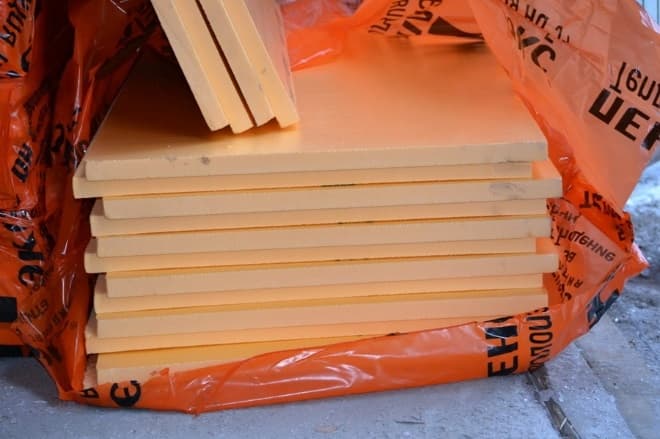

Penoplek is a brand of insulation. There are several types of insulation materials. Penoplex, which has a density of 35, differs from other types in that it has a minimum coefficient of thermal conductivity. This is a significant advantage.
Consider other advantages of Penoplex with a density of 35:
- There is no need to arrange additional waterproofing, since the penoplex has a low level of water absorption.
- Penoplex does not lend itself to rotting, destruction by biological pests, as it has a polymer base.
- Long service life.
- Little weight. Therefore, any structures can be insulated.
- High fire resistance. A substance is added to the feedstock, which reduces the likelihood of ignition. When exposed to a flame, the insulation will not burn, but only can melt. In this case, the minimum amount of toxins will be released.
- Penoplex has convenient and small sheet sizes. Therefore, it is possible to accurately determine the required amount of insulation, as well as the installation process is simpler, the amount of waste during cutting is reduced, and foam sheets can be transported in any way. If the penoplex is not in m3, then you can deliver it yourself manually.
- Due to the high density of the slabs, they can be used as an exterior finish without a supporting structure. Finishing can be done with plastering compounds with reinforcement of the layer with plastic mesh or wallpapering.
If there are many advantages of penoplex, then only one drawback can be distinguished: the density of the structure. It affects sound insulation, thermal conductivity and vapor permeability. If the installation is carried out by gluing sheets, then vapor permeability is important. Therefore, it is necessary to carry out additional work on the natural circulation device, which requires additional costs.
Before buying penoplex, it is worth deciding on the thickness and linear dimensions of the material. This thermal insulation material has only one drawback, which speaks of its quality, so penoplex can be safely used for thermal insulation.
Penoplex Wall is used to insulate the walls of houses.
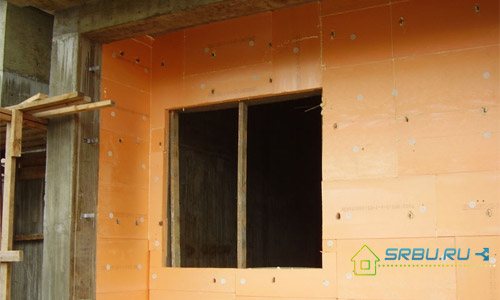

This name is newer - earlier this heat insulator was called PENOPLEX 31 with fire retardants. However, the essence of this has not changed. Plinths, facades, partitions, internal and external walls of buildings are very well insulated with this material.
Moreover, from the inside, the walls are isolated only if, for some reason, it cannot be done from the outside. Or, in case of urgent repairs, it is also convenient to sheathe the walls with insulation from the inside. PENOPLEX STENA® is excellent for these purposes - it is very easy to install.
As for external use, this material has shown itself very well when laying well walls. Compared to traditional brick walls, such walls are much thinner (several times), but they are in no way inferior to them either in reliability or in their ability to retain heat.
Insulation Penoplex Wall can be used to create plastered facades. Since decorative plaster, sold everywhere, shines with a variety of types and colors, the house will turn out to be original and unique.
Types and purpose
So, we figured out the properties and numbers of Penoplex. Now let's take a look at where it is used. The scope of this material is very wide.
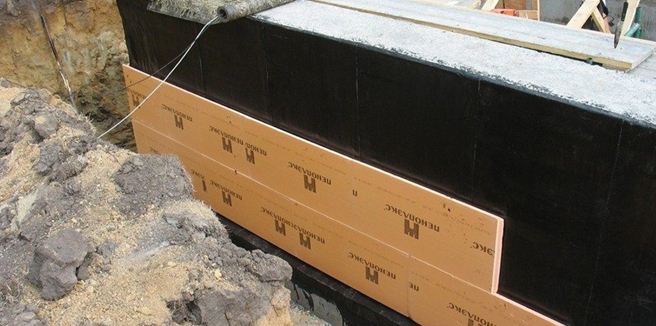

Insulation can be used to insulate the foundation
The company currently offers the following Penoplex brands:
- Foundation... The peculiarity of these boards is their high compressive strength, which allows them to withstand heavy loads. In particular, they are excellent for insulating foundations or for laying under a screed. Keep in mind that the foam insulation of this series does not contain a flame retardant. Therefore, it can only be used in structures with a protective layer;
- Roof... This series has low thermal conductivity and high strength. In addition, the edges of the slabs are L-shaped, which makes it easy to lay the slabs with your own hands, and at the same time create a continuous thermal insulation layer without cold bridges. I must say that the manufacturer positions the material as insulation for a flat roof, however, it can also be used to insulate other structures;
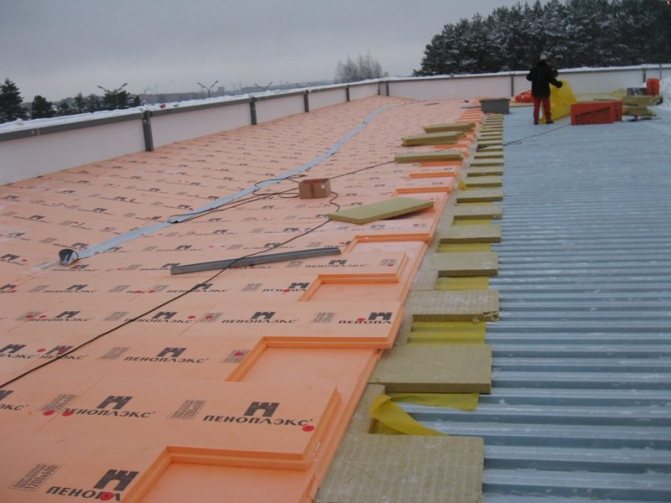

Roof series is designed for flat roof insulation
- Penoplex 45. This series is designed for road insulation to prevent frost heaving. In addition, slabs are used in road construction in permafrost conditions. Insulation in this case prevents soil thawing and subsidence of the roadway. The main characteristic of the material in this series is its high strength. This figure is 0.50 MPa;
- Comfort... This material is intended for insulation of private houses and apartments, as well as balconies and loggias.. The main emphasis is on environmental friendliness - there are no harmful chemicals in the insulation.
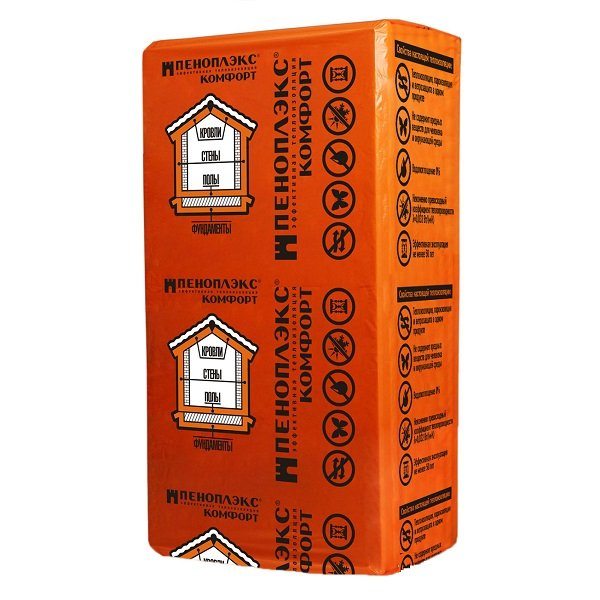

Penoplex comfort - universal insulation for indoor use
In addition, comfort penoplex has L-shaped edges, the same as in the Roofing series;
- Pitched roof... The name of this series speaks for itself - it is intended for pitched roofs. These slabs are of low density, but at the same time they retain their rigidity and moisture resistance. Due to the presence of spikes and grooves on the edges, they reliably dock with each other and form a continuous layer. If the slabs are mounted outside, as shown in the photo, then they also provide additional protection against moisture.
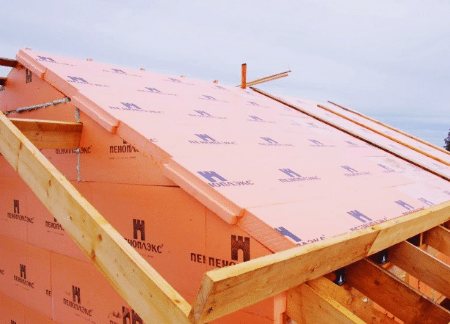

Pitched roof series provides reliable and effective insulation of pitched roofs
- The foundation... This material is positioned as insulation for civil-industrial construction. In terms of application, it can be called universal - these plates can be used to insulate walls, floors, ceilings, roofs, etc. The insulation is able to withstand heavy loads, while it is environmentally friendly and lightweight;
- Facade. This series is intended for external wall insulation. However, these boards can also be used to insulate interior walls and partitions. Due to the textured surface, the slabs can be used not only for hinged, but also for wet facades, i.e. their surface can be covered with plaster and adhesive mixtures. In addition, the material contains fire retardants;
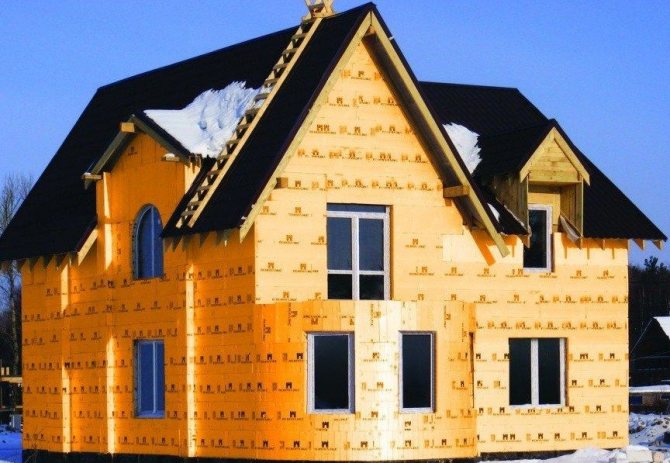

The Facade series is suitable for insulation of external walls using both curtain wall technology and wet facade technology.
- Slope... These slabs are intended solely to create slope and counter slope on flat roofs, as one side is thicker than the other;
- Wall. This series is not much different from the Facade series, with the exception of lower density. Accordingly, the penoplex wall is used in the same cases as the facade material. In addition, the manufacturer recommends this insulation for three-layer walls made of small-piece materials.
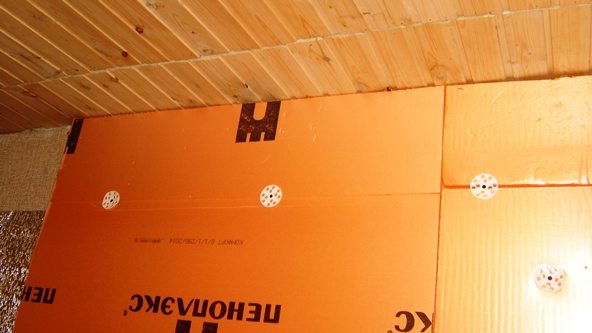

Penoplex Wall can be used for internal wall insulation
Despite the fact that the Facade series has a texture, it is highly desirable to treat the surface of the plates with an adhesive primer before plastering. Moreover, the instructions for using the primer require it to be applied in 2 layers, which allows you to achieve the greatest effect, i.e. good adhesion of plaster with insulation.
Production specifics and special properties
The first extrusion plant appeared in America more than half a century ago. During the production process, polystyrene granules are subjected to high pressure and temperature. The catalyst is a special foaming agent. Usually it is a mixture of carbon dioxide and light freon. The resulting fluffy mass, reminiscent of well-whipped cream, is squeezed out of the extrusion unit. After a while, freon evaporates, and air enters the cells in its place.
Thanks to extrusion, the manufactured material has a finely porous structure. Each of its identical tiny cells is isolated. The size of these cells is from 0.1 to 0.2 millimeters, they are evenly spaced inside the material. This makes the material strong and warm.
Brief instructions for installing penoplex
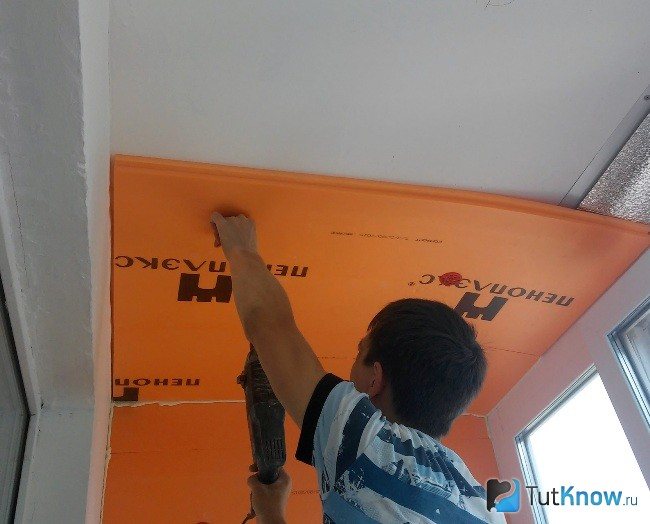

This insulation can be mounted on floors of various designs, walls made of any materials. The technology for installing foam is quite simple and is no different from fixing foam or expanded polystyrene sheets.
If you are insulating the floor, then it is enough to spread the sheets on the leveled surface at a stretch. Fill the joints with polyurethane foam.
To insulate walls, follow these instructions:
- First of all, we prepare the surface - we clean it of old plaster, paint, dirt, dust.
We cover the wall with an antifungal primer.
We level the surface in the presence of deformations, pits, bumps. At the end of the procedure, we again treat it with a primer.
If you are insulating the facade or outer walls, then along the broken line at the bottom we install an L-shaped profile. It will be a support for the lower foam plates.
We begin the installation of the first row from the bottom. Apply adhesive to the slab and press it firmly against the wall.
The installation is carried out according to the brickwork principle, leaving no gaps.
After you finish installing the plates on the glue, wait until the composition is completely dry.
We begin to mount the material on dowels with a mushroom-shaped head and plastic nails.
Please note that the caps should be recessed into the penoplex, and not protrude above the surface.
After that, we reinforce the walls using a special mesh and corners.
Watch a video review of Penoplex:
Penoplex Is a building heat-insulating material in the form of plates of extruded expanded polystyrene, which is in demand due to its lightness, strength and durability. In structure, it is similar to the usual foam, but it is more dense.
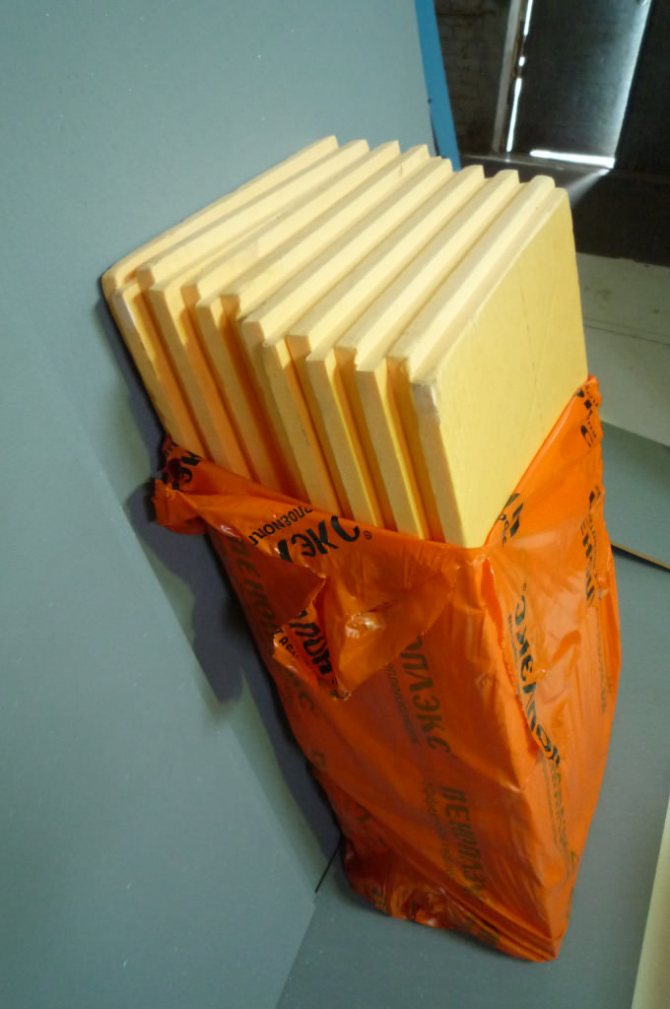

The barely distinguishable pores of the insulation ranging in size from 0.1 to 1 mm are the result of new manufacturing technologies. In appearance, the slabs are composed of a homogeneous material, which in fact is finely porous with insulated cells providing low thermal conductivity and water resistance.
Water absorption - minimal
For heat insulators, the ability to absorb moisture is an important characteristic. The following tests were carried out: Penoplex plates were left in water for a month, immersed in it completely. Water was absorbed by them in a small amount only for the first 10 days, after which the material ceased to take up moisture. At the end of the term, the amount of water in the slabs did not exceed 0.6 percent of their total volume. That is, moisture can only penetrate into the outer cells of the Penoplex insulation, which were damaged when cutting the material. But there is no access to water inside the closed cells.
Thermal conductivity coefficient - small
Compared to many other heat insulators, the thermal conductivity of Penoplex is much lower. Its value is 0.03 W * m * 0 C. Since the material practically does not absorb water, it is quite possible to use it where there is high humidity. At the same time, its thermal conductivity remains almost unchanged - it can fluctuate only from 0.001 to 0.003 W * m * 0 C. Therefore, Penoplex plates can be used to insulate both roofs with attics and foundations with floors and basements, without using an additional moisture protective layer.
Chemical activity - almost zero
Most of the chemicals used in construction are not capable of reacting with Penoplex. There are, of course, exceptions - some of the organic solvents can soften the insulation plates, disrupt their shape, or even completely dissolve.
These substances include the following:
- Toluene, xylene, benzene and similar hydrocarbons (aromatic);
- formalin and formaldehyde;
- substances from the class of ketones - methyl ethyl ketone, acetone;
- ethers, both simple and complex - methyl acetate and ethyl acetate solvents, diethyl ether;
- gasoline, kerosene and diesel fuel;
- polyesters used as epoxy hardener;
- coal tar;
- oil-based paints.
We also give a list of substances that are not capable of damaging Penoplex:
- Any kind of acids - organic and inorganic;
- salts in the form of solutions;
- alkalis;
- alcohols and paints based on them;
- water and water-based paints;
- chlorine (bleaching) lime;
- oxygen, carbon dioxide;
- butane, propane, ammonia;
- oils (both animal and vegetable), paraffins;
- cement and concrete mortars;
- freons.
It is also worth noting that the biostability of the slabs of this insulation is also high - they do not rot or decompose.
However, for the shape and size of the Penoplex plates to remain unchanged, it is necessary to withstand the permissible ambient temperature at which this insulation can be operated. Usually this parameter is indicated in the material passport. With excessive heating, not only the dimensions, but also the characteristics of Penoplex can change, since it can not only melt but also ignite. However, this is a drawback of all foams, as you can see by watching the following video:
Material properties
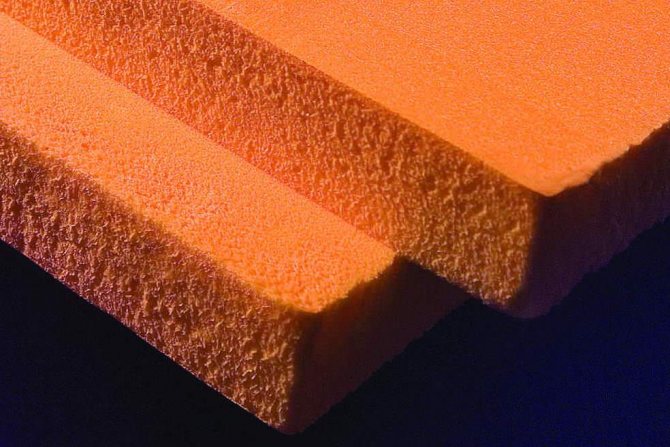

The main characteristics of the insulation meet the requirements of building codes:
- Low coefficient of thermal conductivity. The average level corresponds to 0.027–0.031 W / m. The indicator is the best in the class of heaters. At the same time, its difference from related materials, for example, mineral wool, is not so significant. But the combination of low thermal conductivity with increased density of the structure gives noticeable advantages. An important factor is the invariability of the indicator, significant fluctuations in various conditions are not recorded, therefore, the use of penoplex is allowed without an additional moisture-protective layer both on roofs and attics, and on foundations, floors, in basements.
- Fire resistance. Fire resistance is classified as G3 or G4, which means a moderate level, superior to the properties of the foam that supports combustion. For foam plastic, operating temperatures from -50 ° to + 70 ° C are acceptable. Under open fire conditions, the material is destroyed. The melting process begins, but not combustion. Some types of penoplex are distinguished by enhanced processing with chemical reagents for the manifestation of self-extinguishing. This improved quality corresponds to full fire safety under extended temperature operation.
- Moisture resistance. The water absorption of the extruded polystyrene foam is 0.4% of the volume over a period of 28 days. Moisture enters only the outer pores of the insulation, which are open when cutting and installing the plates. Locked cells remain unchanged. In fact, it can be argued that the material does not allow moisture to pass through. For insulation of facades and roofs of buildings, such indicators of moisture resistance are very significant.
- High compressive elasticity. This figure is equal to 25-35 kg / m 3 and is unsurpassed among expanded polystyrene insulation. Compressive resistance is achieved through an even distribution of tiny cells with good adhesion, which improves the strength characteristics of the material. Penoplex does not change its size even under heavy loads. Slabs are very difficult to break. Only material with a small thickness of 20 mm is subject to damage, but there is no crumbling or crushing along the fault line, unlike other related insulation.
- Weak vapor permeability. The increased resistance is reflected in equal indicators of 2 cm high foam and a layer of roofing material.
- Long service life. The warranty period for use is 50 years, taking into account atmospheric exposure. Under favorable climatic conditions, the plates will last much longer while maintaining all their characteristics.
- Environmental friendliness. The use of freon in the manufacture of insulation is absolutely harmless: this type is non-flammable, non-toxic, does not damage the ozone layer. Environmental properties are interrelated with the biostability of the insulation, the absence of toxic substances. The material is not subject to biological degradation, therefore it does not need to create special storage conditions, the slabs can be placed on sites without shelter from precipitation or temperature extremes.
- Availability in installation and processing... You can cut the slab with an ordinary clerical knife. The low weight allows you to sheathe the walls yourself without additional efforts in the construction of special frames.The material adheres well to the glue. Weather conditions do not hinder installation.
- Resistance to aggressive substances. Most of the building mixtures and preparations are not capable of damaging the penoplex, which does not react with them. These include organic and inorganic acids, alkalis, water-based paints, salt solutions, ammonia, cement or concrete mixtures, alcohols and oils, bleach. Extruded polystyrene foam is practically not characterized by chemical activity. Attention! The exceptions are ethers, gasolines, formaldehydes, oil-based paints.
- High sound insulation. In private housing construction, the sound insulation factor is very important. Penoplex solves this problem.
Penoplex Wall is used for wall insulation


This name is newer - earlier this heat insulator was called PENOPLEX 31 with fire retardants. However, the essence of this has not changed. Plinths, facades, partitions, internal and external walls of buildings are very well insulated with this material.
Moreover, from the inside, the walls are isolated only if, for some reason, it cannot be done from the outside. Or, in case of urgent repairs, it is also convenient to sheathe the walls with insulation from the inside. PENOPLEX STENA® is excellent for these purposes - it is very easy to install.
As for external use, this material has shown itself very well when laying well walls. Compared to traditional brick walls, such walls are much thinner (several times), but they are in no way inferior to them either in reliability or in their ability to retain heat.
Insulation Penoplex Wall can be used to create plastered facades. Since decorative plaster, sold everywhere, shines with a variety of types and colors, the house will turn out to be original and unique.
Benefits
Which insulation is better? 6 simple rules for choosing:
- Rule # 1. Havethe heater MUST BE WATER RESISTANT!
- Rule # 2. The insulation must be DURABLE!
- Rule # 3. Insulation must provide high HEAT PROTECTION!
- Rule # 4. Insulation should work LIKE THERMOS!
- Rule # 5. The insulation should be WARMING, not burning!
- Rule # 6. The insulation must be SAFE!
How to choose the best insulation for a country house?
The fact that any building needs to be insulated is known today to everyone who has thought about building or reconstructing their own home. The reliability of the structures of the entire building, the comfort of living, the health of your loved ones and the amount of funds that will be spent on heating or air conditioning of the whole house depend on effective thermal insulation. When it was decided that the house needs to be insulated, how to understand which insulation is better? Today, the market offers several groups of insulation: glass wool, penoplex and stone wool. This article offers 6 universal rules "how to choose insulation" that will help you choose the right material for your home on your own.
Which insulation is best? 6 SIMPLE RULES TO CHOOSE:
Rule # 1: Insulation MUST BE WATER RESISTANT!
Water absorption of a good insulation = 0!
To understand the connection between water absorption and heat protection, it is enough to draw a simple analogy: each of us remembers from childhood that “Feet should be warm”, if we wet our feet, we have a cold. If caught in the rain - you need dry clothes to keep warm. The same applies to the "clothing" for the house: the foundation, walls (facade), roof every day are exposed to the influence of the environment: groundwater, a sharp change in temperature, precipitation - all this can lead to the formation of condensation in the heat-insulating layer, and therefore deprive your heat protection house: in winter it will be cold in such a house, and hot in summer. The formation of condensation is also dangerous because it leads to the formation of mold, fungi and other harmful bacteria that destroy the material and pose a potential threat to the well-being and health of households.
Recommendation: when choosing a waterproof insulation, pay attention to the structure of the material, the harder and more uniform it is, the less chances for moisture penetration. There is also a more reliable way: the water absorption indicator is usually indicated in the technical specifications for the material and published on the manufacturers' websites.
Rule # 2 Insulation must be DURABLE!
The compressive strength of high-quality insulation is not less than 20 tons per m2!
Strength is especially important when insulating foundations, plinths and floors, since the insulation in these structures is constantly in a loaded state. The insulation must be durable so that it does not crumble or break during the construction period and does not settle over time. The strength of the insulation helps to prevent shrinkage and deformation of the insulation when it is mounted vertically in the walls, which determines the effectiveness of the insulation throughout its entire service life. High-quality insulation guarantees 50 years of efficient operation!
Recommendation: when choosing which thermal insulation is better - pay attention to the evenness of the edges, try to press on the sample. A high-quality insulation will always have an even edge, a homogeneous structure and minimal changes when pressed.
Rule # 3 Insulation must provide high HEAT PROTECTION!
Insulation Penoplex: technical characteristics
Currently, there are many different thermal insulation materials on sale. One of them is Penoplex insulation whose technical characteristics fully meet the highest requirements for thermal insulation of almost any building elements.
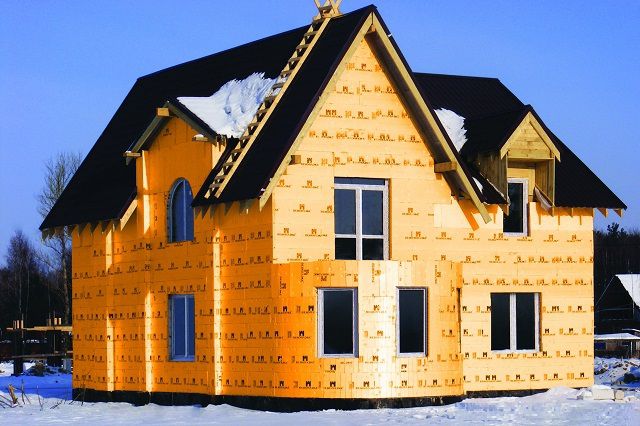

Insulation Penoplex technical characteristics
Modern technologies with the use of non-toxic components make it possible to manufacture lightweight and easy-to-install heaters. "Penoplex" is produced by extrusion using various chemical additives, so the material cannot be called absolutely environmentally friendly.
The technical and operational characteristics of "Penoplex" clearly show that today it is one of the most effective heat-insulating materials. and the parameters of this insulation should be considered more closely.
What is Penoplex?
"Penoplex" is, in fact, extruded polystyrene foam, which is an improved form of a long-known foam plastic.
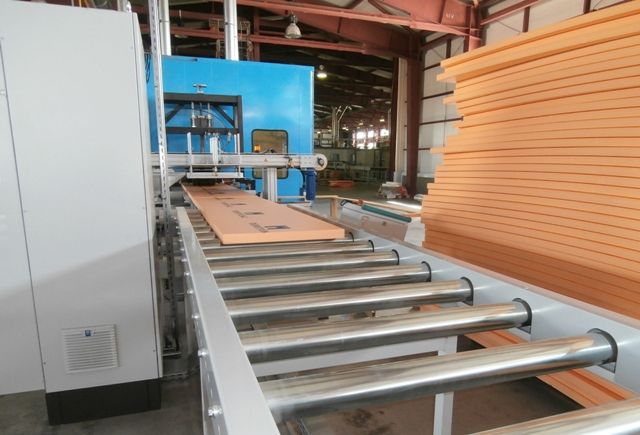

Thermal insulation extrusion line
The first installation for the manufacture of this material appeared more than half a century ago in the United States. The production process is as follows: polystyrene granules are sent to a special chamber, where, in the process of manufacturing the working composition, they are melted and foamed using porophores under the influence of high temperatures. The result is a lush, thick foam similar to whipped cream, which is squeezed out in an even layer of a set thickness from the nozzles of the extruder, and then enters the conveyor belt and is cut into separate panels. The whole process takes place in a closed mode, and you can only see the finished product.
Penoplex prices
Foaming of polystyrene occurs by adding porophores to it - chemical compounds, when heated, there is an active release of gaseous products - carbon dioxide, nitrogen and others, which foam the polystyrene mass. The composition of porophores for the manufacture of extruded polystyrene foam may include the following substances:
The composition is prepared and molded at a temperature of 130 - 140 ° C at a rate of up to 60 kg / h. In this way, not only Penoplex is produced, but also Technoplex, Extrol and other domestic and imported heaters.
In the form of additives to such materials, light stabilizing substances, antioxidants, flame retardants, modifiers, antistatic agents and other components are used.
- Antioxidants are added during the extrusion process - they prevent thermal oxidation during processing and rapid destruction during storage and operation of the insulation.
- Fire retardants reduce the flammability of the material or make it completely non-combustible.
- Other additives protect the material from aggressive environmental influences.


Porous structure of "Penoplex"
When the extruded polystyrene foam solidifies, an air gap remains inside it, evenly distributed over the entire structure of the material. Therefore, the finished insulation has a homogeneous porous structure with small cells ranging in size from 0.1 to 0.3 mm, filled with air (gas). Each of them is isolated from the other, which ensures the highest thermal resistance and material strength.
You may be interested in information on how walls are insulated inside a house with mineral wool
Technical and operational characteristics of "Penoplex"
The main characteristics of the material are shown in the table:
As you can see, several varieties of "Penoplex" are produced, which are designed for a specific area of application. Therefore, slabs of material have a retail density and a certain range of standard sizes. The insulation is easy to install, lightweight, perfectly cut to the required size. All this allows the process of thermal insulation of building elements to be carried out independently.


Plates "Penoplex" are very easy to install
The table gives "dry numbers", but it is worth considering each of the parameters in more detail.
- Coefficient of thermal conductivity
"Penoplex" has a low thermal conductivity: this parameter is one of the lowest among all modern heaters, about 0.03. The thermal conductivity of the material remains practically unchanged with changes in humidity or ambient temperature (fluctuations do not exceed 0.001 ÷ 0.003 W / m2 × ° C). Therefore, "Penoplex" is suitable for both external and internal thermal insulation - it is used for insulation of roofs and ceilings, basements and foundations, and it does not require additional external protection with moisture-resistant materials.
- Hygroscopicity
Features of installation of penoplex
• When choosing foam, it is necessary to take into account the density of the material. For insulation of walls, balconies, plinths, it is recommended to use values of 25-32 kg / m3. Insulation with a density of up to 35 kg / m3 is selected for roofing work.
• Before fixing the slabs, you must first prepare the surface by cleaning it from dirt and filling up the cracks found. If the building is dilapidated, it is irrational to produce insulation.
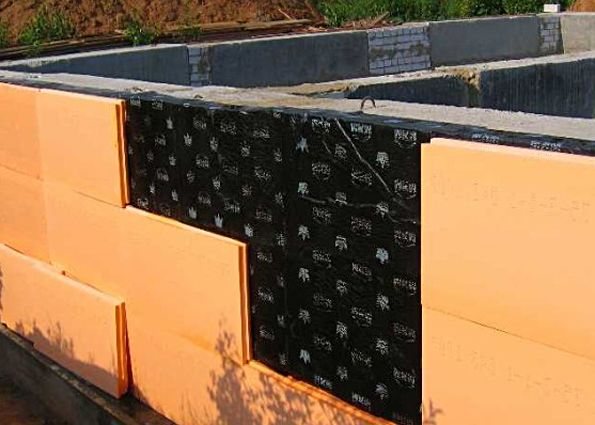

• Begin laying the foam with the installation of the L-shaped profile (starting strip). The order of the slabs is reminiscent of brickwork. The displacement of the seams along the rows gives the surface strength.
• First, the insulation is attached with a special glue. After it has solidified, additional fixation of the insulation is performed using dowels-fungi. 5-6 pieces are consumed per square meter.
• The joints between the foam sheets should be minimal to prevent the formation of cold bridges.
• Corner parts of the work surface are reinforced with special perforated corners.
• If further finishing involves the use of plaster, a fiberglass reinforcing mesh is attached to the insulation using mortar. In the case of surface cladding with finishing panels, the joints of the plates are additionally pasted over with foil tape to impart tightness to the joints.
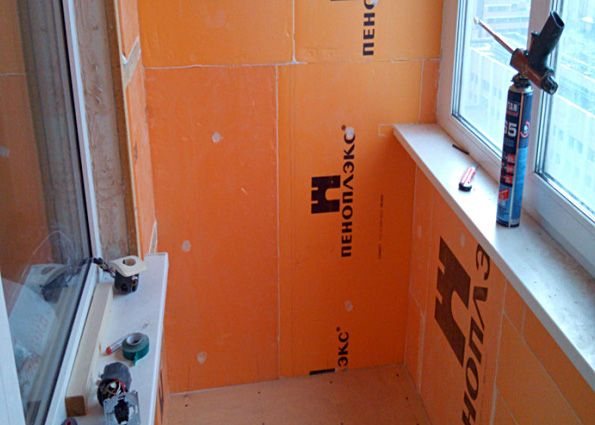

• The durability of the foam is quite high, so almost any plaster can be used for finishing: embossed, structural, etc.
• Boards for thermal insulation of the floor have grooves at the edges, therefore, when connected, they form a flat surface. This method of insulation can be used under the topcoat, having previously cleaned and primed the concrete base. The main condition is to install the lag.
Before using penoplex, as well as any other material, you should consult with a specialist about the possibility and rationality of this insulation for a certain type of work. The foreman will be able to recommend the density of the slabs, based on research and heat loss calculations.
